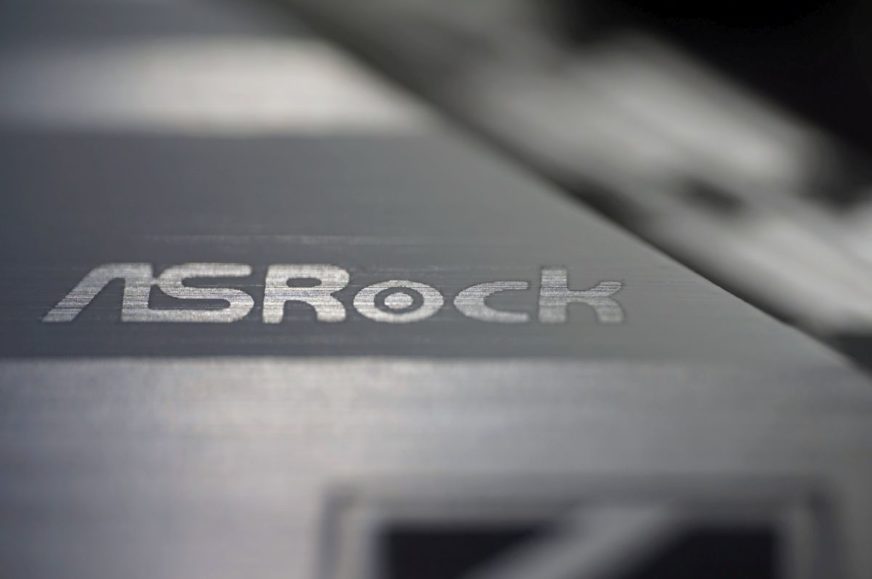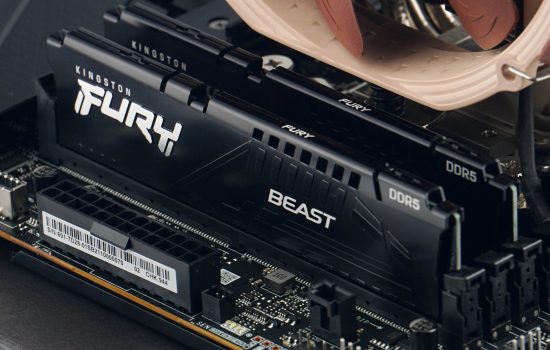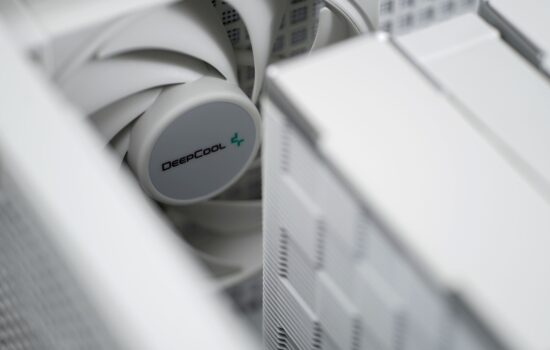Conclusion
The low price of a motherboard brings with it a few unconventional limitations. Ones that are not often found in competing models for similar money. Some of these are of the safety variety to avoid unnecessary damage to critical components. For a customer buying a standard, reasonably set-up build in this price class, they won’t be a bother, and saving money with the B660 Steel Legend can be beneficial.
Conclusion
The ASRock B660 Steel Legend is looked down upon by many for one reason and one reason only – “weak VRM with high temperatures”. But this is a very superficial view of the matter. Sure, the power delivery is weaker than that of the TUF Gaming B660 Plus WiFi D4 compared to which ASRock’s board mostly pulls the short end of the stick in other ways as well.
However, higher CPU performance per unit of power draw (than on the TUF Gaming B660 Plus WiFi D4) is achieved on the B660 Steel Legend. And quite significantly so. It’s not so much that more efficient components are used within the power cascade, it’s that the B660 Steel Legend has a PL2 capped at 241 W and you can’t loosen the bridle any more. That said, ASRock is working with a lower, less aggressive voltage and doesn’t overdrive the power supply too much. The difference is roughly 50 W (about 20 % of the total power draw), by which the CPU power draw is lower. ASRock goes at the lower end of its capabilities, but in a way that doesn’t limit the computing or gaming performance of the CPU in any way. In fact, even in high load with AVX instructions, 200 MHz higher clock speeds are achieved, which can of course be influenced by adjusting the negative offset manually.
Under gaming load, CPU clock speeds are already the same (4.9 GHz) and ASRock board power draw is in turn lower. It is not as pronounced anymore and it is not determined by pressure on lower power limits, but again it is indicative of more efficient voltage management. And that with the Core i9-12900K the temperatures of the voltage regulators climb above 100 °C? That’s a fact, but at 220 watts, which won’t meet with practice. At a load a hundred watts lower (around 125 W) temperatures even without heatsinks is up to 65 °C, which is already fine, by a good margin. For running a Core i5-12×00(F), it’s a great board in terms of power and performance, more efficient than the TUF Gaming B660 Plus WiFi D4. It has lower efficiency in certain circumstances (with more powerful CPUs) only in idle, where unless you lower the PL1 limit enough, it reaches one of the highest power draws.
Some might argue that you can get similar and even better results by undervolting with an Asus board. But how many people do this? The ASRock B660 Steel Legend is weaker in all respects and that is why we will not glorify this board any more. However, it was important to point out that a less robust VRM doesn’t necessarily mean a worse choice. Especially when reviewers often test with overly powerful processors and pass judgement based on impractical results.
Compared to the TUF Gaming B660 Plus WiFi D4, the B660 Steel Legend doesn’t have WiFi antennas, has one of the slower M.2 SSD connectors, fewer USB ports on the rear panel, but again has the benefit of two SATA ports and RGB LED lighting. So it depends on what you prefer. The sound adapter is the same in both cases, the outdated Realtek ALC897.
The network is 2.5-gigabit (Realtek RTL8125B), transfer speeds are similar, although the Intel I225-V on the rival board is a hair faster. The SSD heatsink also has a rather lower efficiency on the ASRock.
And then there are some performance differences. With a more powerful processor in a lower resolution Full HD, ASRock usually loses some of that percentage to the TUF board for similar money. In Borderlands 3 and Metro Exodus it’s still only 2 %, in Total War Saga: Troy 3 %, in Shadow of the Tomb Raider it’s 6 % and In F1 2020, it’s already up to 9 % in terms of average fps. The weaker the graphics card you have compared to the RTX 3080 (which we’re testing with), the more these differences will diminish. Or with the increase in resolution to UHD, when the TUF board has a at most 1 % lead (in F1 2020 and SOTTR) or even the B660 Steel Legend takes the lead (by 2 % in TWST).
It is notable that with the Core i5-12400, better results are usually achieved on the ASRock board, even at FHD resolution. As much as the B660 Steel Legend with Core i9-12900K was in the minus in F1 2020, it is now in the plus (i.e. by 9 %). Then it has a 5 % edge in Metro Exodus and isn’t even slower in Total War Saga: Troy. With different components, these ratios may naturally vary a bit, but at the very least, it again shows that the ASRock board performs better with more low-power processors. And even in very high workloads, for example in 3D rendering, where the Core i9-12900K produces the weakest results and the Core i5-12400 some of the best. Even if it’s all tight, by single digits. The B660 Steel Legend also leads the way in single-core load when encoding audio recording, though the single-core boost clock speeds achieved are paradoxically the lowest.
The ASRock Steel Legend is looking like an excellent choice to the more low-power mid-range Alder Lake processors. It achieves both above-average performance and above-average efficiency with them. Both compared to the TUF Gaming B660 Plus WiFi D4 for similar money and against significantly more expensive motherboards. However, you have to accept weaker connectivity, which is below average even in this price range.
English translation and edit by Jozef Dudáš
| ASRock B660 Steel Legend |
| + Decent value for money |
| + High performance per watt even with the most powerful processors... |
| + ... but especially efficient operation with more low-power ones, for which the board is better optimized |
| + Always efficient power management under load |
| + With the Core i5-12400 often slightly higher performance even than on significantly more expensive boards |
| + Up to three M.2 slots for SSDs, including two four-lane slots with PCIe 4.0 support |
| + Internal USB Type-C connector with Gen. 2×2 3.2 support |
| + Above-average number (6) of SATA connectors |
| - Eventually higher idle power draw |
| - One of the M.2 slots is a bottleneck for more modern SSDs (only with PCIe 3.0×2 support) |
| - In the first slot, a bit ill-conceived mounting of an SSD with its own heatsink |
| - The rear panel does not allow for the connection of external WiFi antennas |
| - Higher VRM temperatures, but this is not a tragedy |
| - Outdated Realtek ALC897 sound chip |
| Approximate retail price: 174 EUR |
Games for testing are from Jama levova
Special thanks to Blackmagic Design (for licenses for DeNoise AI, Gigapixel AI and Sharpen AI) and Topaz Labs (for licenses for DeNoise AI, Gigapixel AI and Sharpen AI)
- Contents
- ASRock B660 Steel Legend in detail
- What it looks like in the BIOS
- Methodology: Performance tests
- Methodology: How we measure power draw
- Methodology: Temperature and frequency measurements
- Test setup
- 3DMark
- Borderlands 3
- F1 2020
- Metro Exodus
- Shadow of the Tomb Raider
- Total War Saga: Troy
- PCMark and Geekbench
- Web performance
- 3D rendering: Cinebench, Blender, ...
- Video 1/2: Adobe Premiere Pro
- Video 2/2: DaVinci Resolve Studio
- Graphics effects: Adobe After Effects
- Video encoding
- Audio encoding
- Photos: Adobe Photoshop, Affinity Photo, ...
- (De)compression
- (De)cryption
- Numerical computing
- Simulations
- Memory and cache tests
- M.2 (SSD) slots speed
- USB ports speed
- Ethernet speed
- Power draw curve (EPS + ATX connector) w/o power limits
- Power draw curve (EPS + ATX connector) with Intel’s power limits
- Total power draw (EPS + ATX connector)
- Achieved CPU clock speed
- CPU temperatures
- VRM temperatures – thermovision of Vcore and SOC
- SSD temperatures
- Chipset temperatures (south bridge)
- Conclusion













